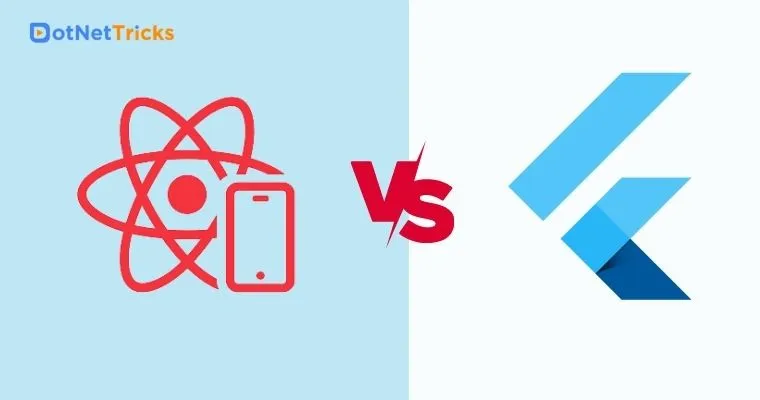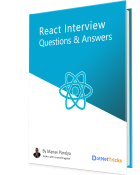25
apr.React-native vs flutter- Everything you need to know
One may get confused on which one to choose between React Native and Flutter. Well, the below article helps you gain a clear overview of the differences between the two:
What is React Native?
React Native is a renowned open-source framework that operates on JavaScript. Essentially, it emphasizes the native deployment of applications that is mainly compatible with iOS and Android. This framework is written using the combination of JavaScript (also known as JSX) and XML -Esque markup. The reason behind its wide popularity is it is being supported by Facebook with multiple skilled engineers currently working on the framework.
Where is React Native used?
- Apps with streamlined user interface
- Quick prototype applications
- Simple cross-platform apps
- Apps that appear nearly native with the responsive UX using FlexBox
- Apps equipped with reusable components
- Apps that run with synchronous APIs
What is Flutter?
Flutter is also recognized as an open-source framework but it works with a language named Dart designed by Google. Usually, it is addressed as an enhanced UI toolkit that is utilized to create cross-platform applications through a single codebase. Furthermore, it offers easy accessibility to develop mobile and flexible UI through native performance. This framework is being supported and contributed by multiple Google developers as well as the whole flutter community.
Where is Flutter used?
- MVP mobile applications
- Apps that work with OS-level features
- Advanced OS plugins with straightforward logic
- High-performance apps with Skia rendering engine
- Apps with material design
- Reactivate apps with huge data integration
- Flexible UI with high-level widgets
Difference between React Native and Flutter based on programming language:
Whether you want to become a react developer or Flutter developer, you need to first know the programming languages these frameworks use. React Native makes use of JavaScript which is the most famous programming language for web development. The JavaScript developers are generally acquainted with the React framework that shares several features with React Native. Moreover, it lets you easily master and use the tool, chiefly when a company possesses a team of web developers. For those who are already familiar with React and JavaScript, React Native makes it quite easy to build various mobile applications.
Flutter works on Dart, a programming language from the Google team that is rarely used on the exterior of the framework. This programming language uses Java and JavaScript in syntax. So, it becomes easy for those developers who hold some experience with C#, JavaScript, and other object-oriented languages.
Difference between React Native and Flutter based on native components:
React Native training offers the essential elements for developing an app that possesses device API access and UI rendering abilities. To explore other functionalities like retrieving native modules, React depends on third-party libraries. Generally, it is less convenient than accessing all the tools you require from a single package.
Flutter provides plenty of libraries, testing tools, navigation, and a widespread set of widgets. All these are offered in addition to the basic UI rendering and standard device API access. So, you can create visually attractive interfaces with less effort.
There are several cases in which Flutter lets developers relinquish the usage of third-party libraries. In this framework, all necessary components are packed inside to deal with the required tasks and meet the design needs.
Difference between React Native and Flutter based on performance:
In terms of performance, Flutter surpasses React Native. The reason is the JavaScript bridge which is utilized to communicate amongst the native modules. In the ‘hello world’ app of React Native, the number of frames dropped is quite higher than Flutter. In certain cases, the application takes more than 16 ms to deploy the program. Ultimately, this makes your application sluggish.
It is possible to enhance the app’s performance with the use of third-party libraries such as Proguard which optimize the bytecodes. When you undergo React Native Training or react js certification, you can learn in-depth about the performance of React Native.
On the other hand, Flutter applications don’t need a bridge for communicating between the native modules. This is because this framework comes with the default accessibility of native components. Based on the performance test, it is inferred that the ‘hello world’ app performs at 60 fps. Moreover, the time required to render each frame takes less than 16 ms.
Pros and Cons of React Native:
Pros:
- Native rendering eliminates the need for HTML or CSS markup.
- High performance through genuine UI elements
- Huge ecosystem and UI libraries automatically adapt the app’s appearance with every state change and that also enhances the overall app performance.
- Access to error reporting and intelligent debugging tools.
- Allows directly adding new codes to a live application.
- Massive community people are there to support the multiple use-cases hence, we can have the hands-on problem solution in no time which can be faced frequently
Cons:
- APIs’ native rendering does not support some native UI elements
- Third-party libraries may become obsolete
- Slow performance since it does not support multi-processing and parallel threading
- Inconvenient to analyze codes, edit, and UI elements
- The react-native documentation is not up to the mark hence it misses out on some learning for the developers
Pros and Cons of Flutter:
Pros:
- Hot Reloading shows instant results without change in the application state.
- Integration with Java for Android and Objective C or Swift for iOS eliminates the need for re-writing code
- Easy and fast sharing of code across platforms
- Testing is needed only for a single codebase, so saves build time
- It has great official documentation that enhance the learning experience by having media and textual information
Cons:
- The tools and libraries are not as rich as those in React Native.
- Not compatible to create apps for Android Auto, tvOS, watchOS, or CarPlay
- Updates and patches need to pass across the standard release procedures. So, it takes time.
- As the flutter still evolving, the community supports is quite less as more and more developers are still being engaged with the development challenges
Which one to choose React Native or Flutter?
Both React Native and Flutter are efficient frameworks. With any of these frameworks, you can create a cross-platform application that runs simpler and faster than with most of the native tools.
Flutter is pretty easier to use as it has more resistant to system updates frequently. It means that when the iOS or Android update the o/s then the application will remain the same. On the other hand, React Native depends on its native elements, so when the update has been released, some of the problems may occur while launching the app. Currently, Flutter supports Android 4.1 or iOS 8 and the concurrent updated versions, while React Native supports Android version 4.1 & more while for iOS, it supports version 10 and more versions.
If you already own a team of experienced JavaScript developers, React Native is a better choice. Flutter provides plenty of customizable widgets which can be used on Android and iOS platforms. Being compiled to native libraries, Flutter performs faster and better. If you prioritize fast performance, go for Flutter. If you prioritize rich tools and libraries, go for React Native.
Take our free skill tests to evaluate your skill!

In less than 5 minutes, with our skill test, you can identify your knowledge gaps and strengths.





